I always wanted to do some more tests on the ghost images in my new LS100PT with the DS unit. To try this out I took a baseline image without the DS unit and no other auxiliary optics like barlows etc. I used the Canon DSLR which is non-typical for H-A solar work, but it gave me the biggest sensor I could get. The exposure gives a reasonable representation of the view in a low magnification eyepiece for full disc viewing. Next I added the DS unit (PT model) and took same exposures as baseline with the DS unit in 3 different rotations. Primary and DS PT unit were of course adjusted for best H-A. There is a surprisingly strong ghosting which does not rotate with the DS unit but is absent in the baseline.
So it must be some reflection from a surface in the base unit that gets illuminated from the DS unit.
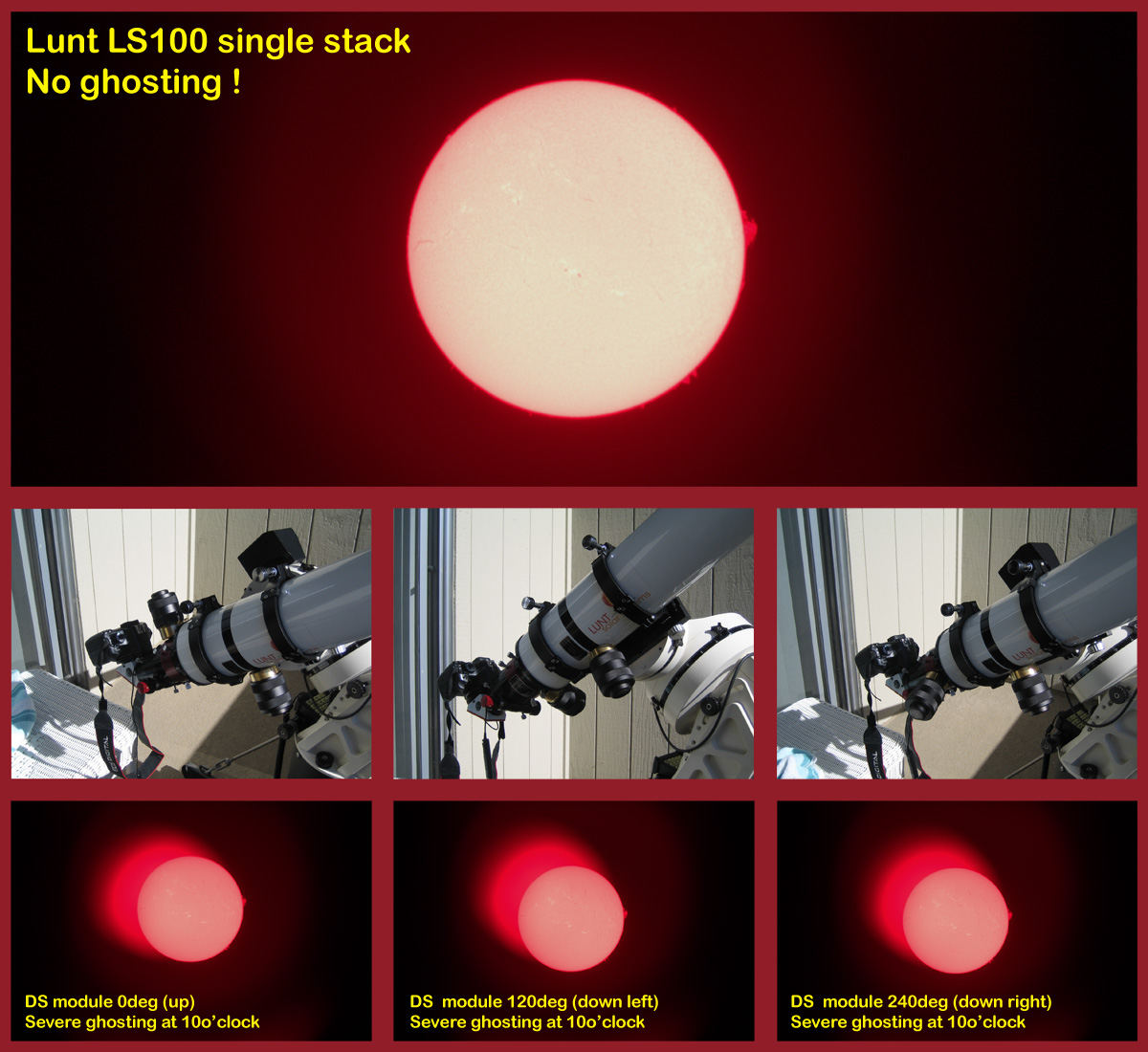
I rotated the DS unit and then counter rotated the BF with camera back to initial orientation. So only the DS unit could cause the effect. It is interesting to note that the ghost image did not move during that rotation experiment. This opens up the question which optical surface might cause the ghost.
So the new experiment was to keep the DS unit stationary, rotate the BF unit and accordingly counter rotate the camera. The results are below. What surprised me beyond my understanding is that again the orientation of the ghost is not moving. It would be wonderful if the forum experts could help answer that mystery.
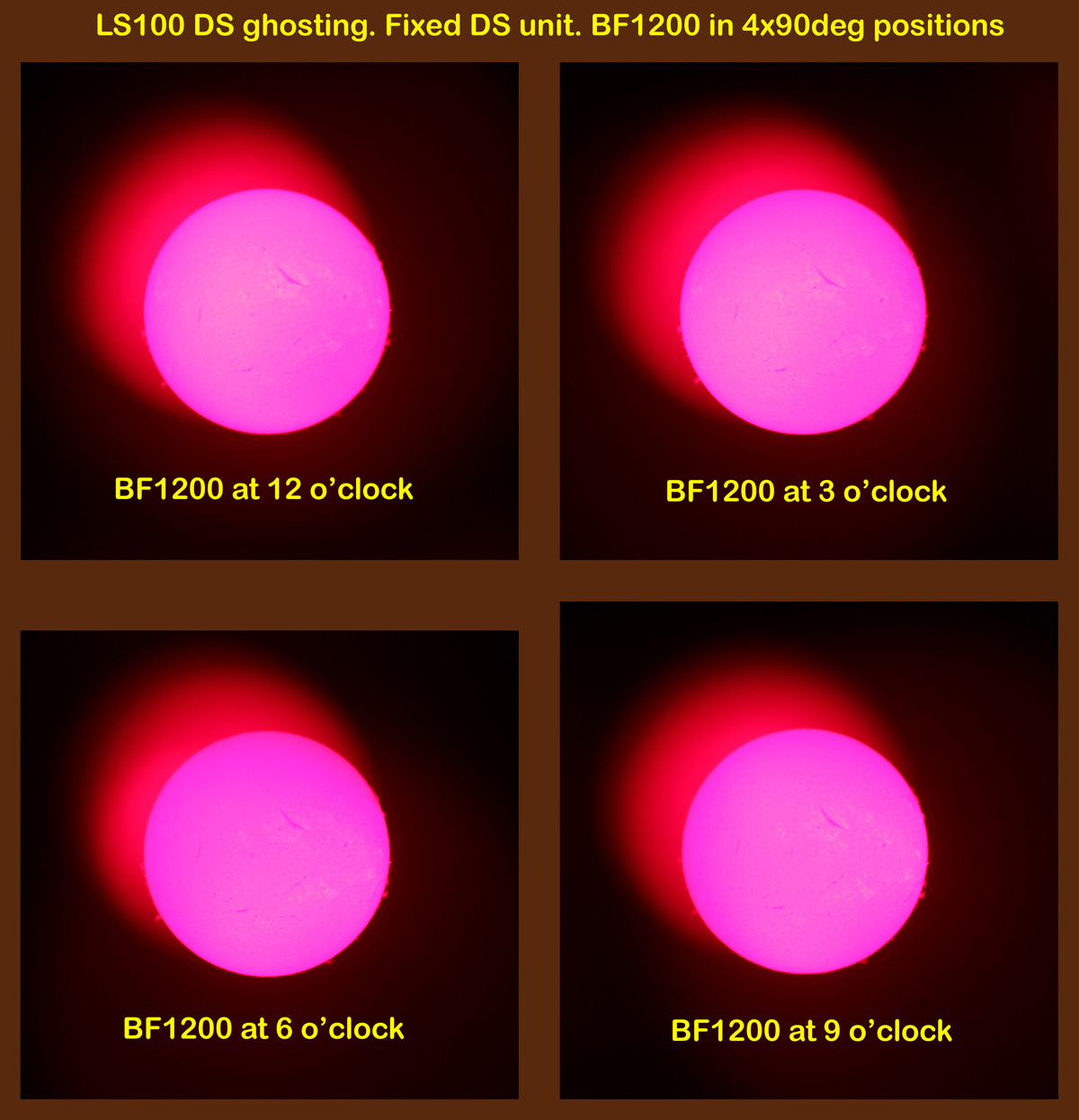
The LS100 and DS unit went to Lunt for servicing and I can report on the latest tests after it came back to me. In conversation, Lunt tech support informed me that the HRC glass that they had initially sent me had actually erroneously been a misshipped stock glass and not the high contrast version. This Sunday was sunny and clear blue sky, well suited for tests. Using the same setup as in prev tests I shot solar images with the Canon DSLR under 3 angles of rotation of the DS unit. The new HRC glass has better transmission and the first impression was that the image was brighter. When I adjusted the exposure of the camera (all other settings equal) it turned out to be one full exposure step. From prev. 1/4sec I had to go to 1/8sec to achieve same disk brightness. I used that setting to compare the residual ghosting. I would eyeball the residual ghosting to be 1/2 of what it was before. I guess that's a good achievement by the Lunt tech support team, and probably the end of the line for what can be done here.
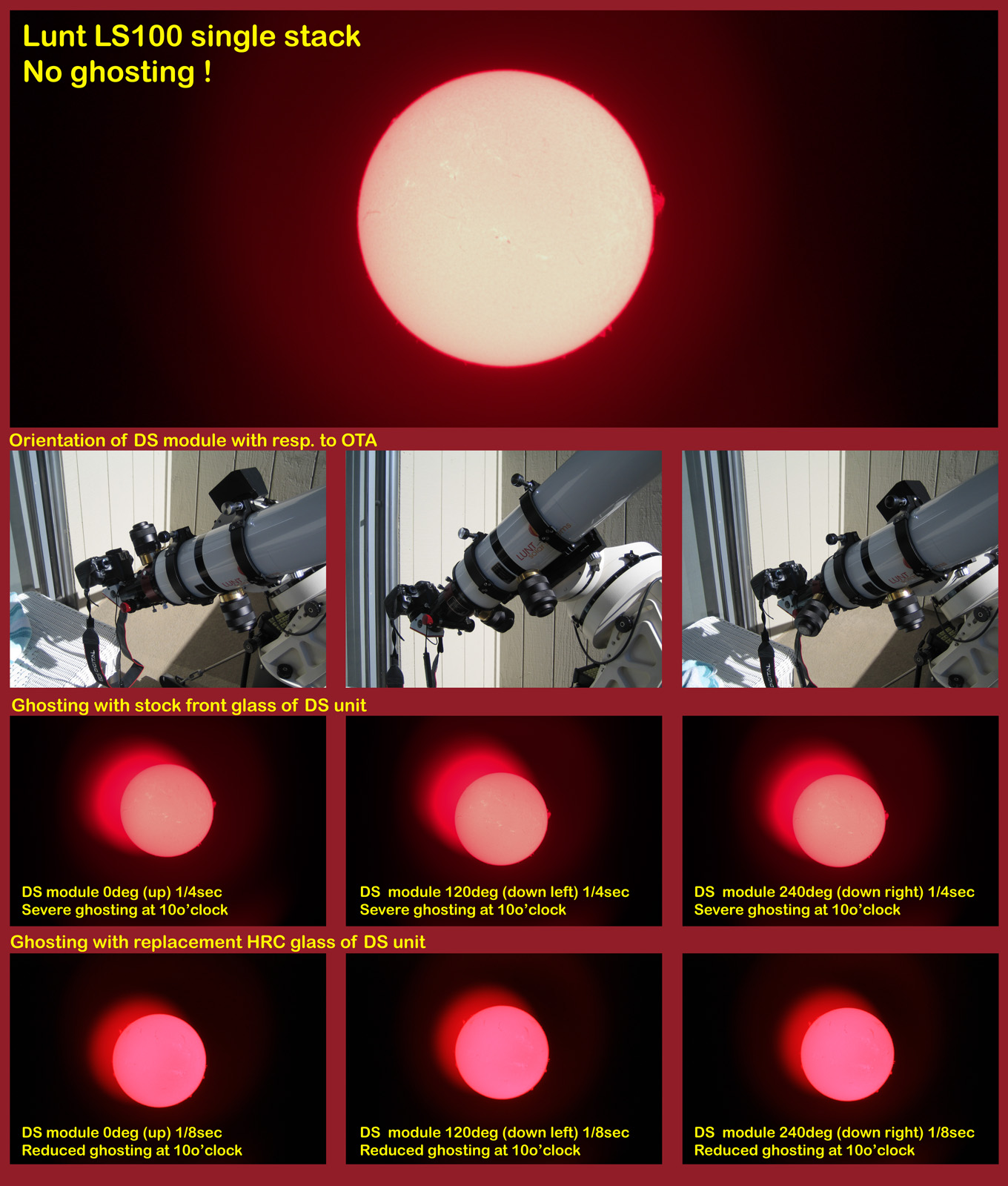
Following Solar-Chat user 'Carbon60' recommendation I attached a rear facing circular polarizer (Amazon photo accessory) to the front nose piece of the Lunt DS unit. Just in front of the newly updated red glass with high efficiency coatings. There is enough clearance in the LS100 OTA to insert the DS unit with the polarizer attached.
Visually the image was noticeably darker. Physics allow a 50% max transmission of a polarizer with incident randomly polarized light. Alas the Amazon filter may not be perfect so an additional darkening happens. Visually the ghosting was very much eliminated so I went on to photographic tests. Using the same DSLR attachment and camera settings I went through a test series with 120deg rotations of the DS unit. I estimate the exposure penalty to about 3x. Somewhere between the (expected from physics) 2x and some penalty from the non-perfect transmission of the Amazon filter. When I had prev. 1/4sec to 1/8sec I now need 1/2 sec to 1sec to achieve similar image intensity. Nicely the ghosting is reduced to a non-noticeable level.
Trying to get my head around this I ask myself why Lunt isn't endorsing this kind of fix. (They didn't mention it to me in numerous phone calls and emails) I can only assume that the substantial darkening of the image would bring in more customer complaints than then ghosting does.
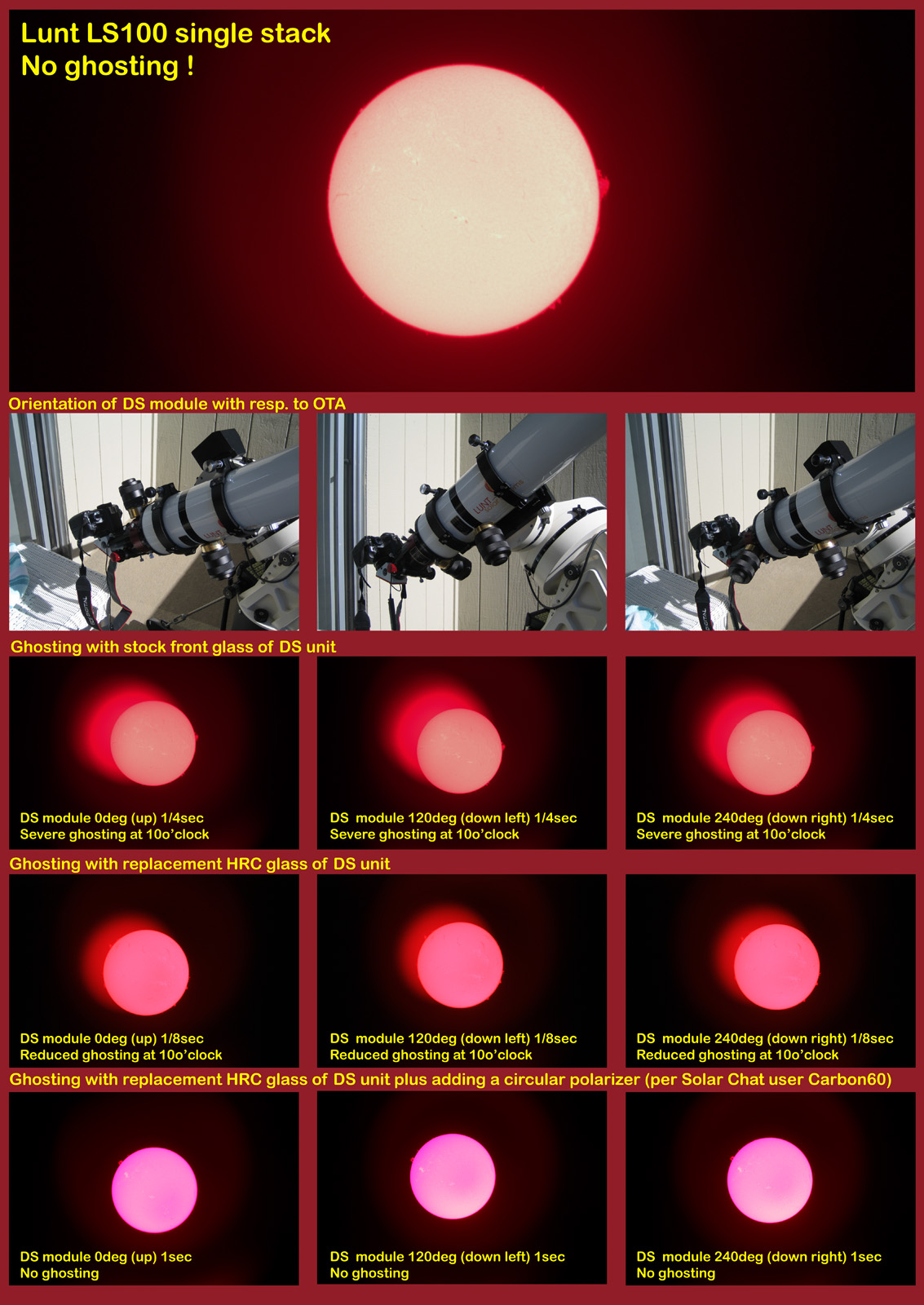
With the polarizer filter mounted one immediately noticeable effect was the loss in brightness. The contrast is excellent but the image gets darker. The physics of a polarizer filter dictate that 50% are lost. As an experiment I configured the Lunt LS100PT with the DS unit and the polarizer filter. To record the image the DMK41 camera was used which is the model that I always use for solar H-A imaging. As a separate topic one might want to look into a camera with a higher H-A sensitivity sensor.
With gain and gamma settings the same a good exposure for prominences was at 25ms with the filter. Now removing the filter and keeping the same exposure time immediately showed the ghosting to the upper right. (Only the left right sides of the sun were imaged). Leaving gamma and gain the same the Exposure was reduced until the saturation of the prominence was about the same. This was found at 10ms when observing the laptop screen and comparing from memory. On the comparison composite on the desktop monitor the comparison might be indicating even shorter exposures like 7ms to 8ms. The ratio of 25ms to approx 8ms indicates that rather than 50% about 66% of the light gets lost in the polarizer (model 'Tiffen'). Some experimentation needs to be done to find a circular polarizer with less light loss.
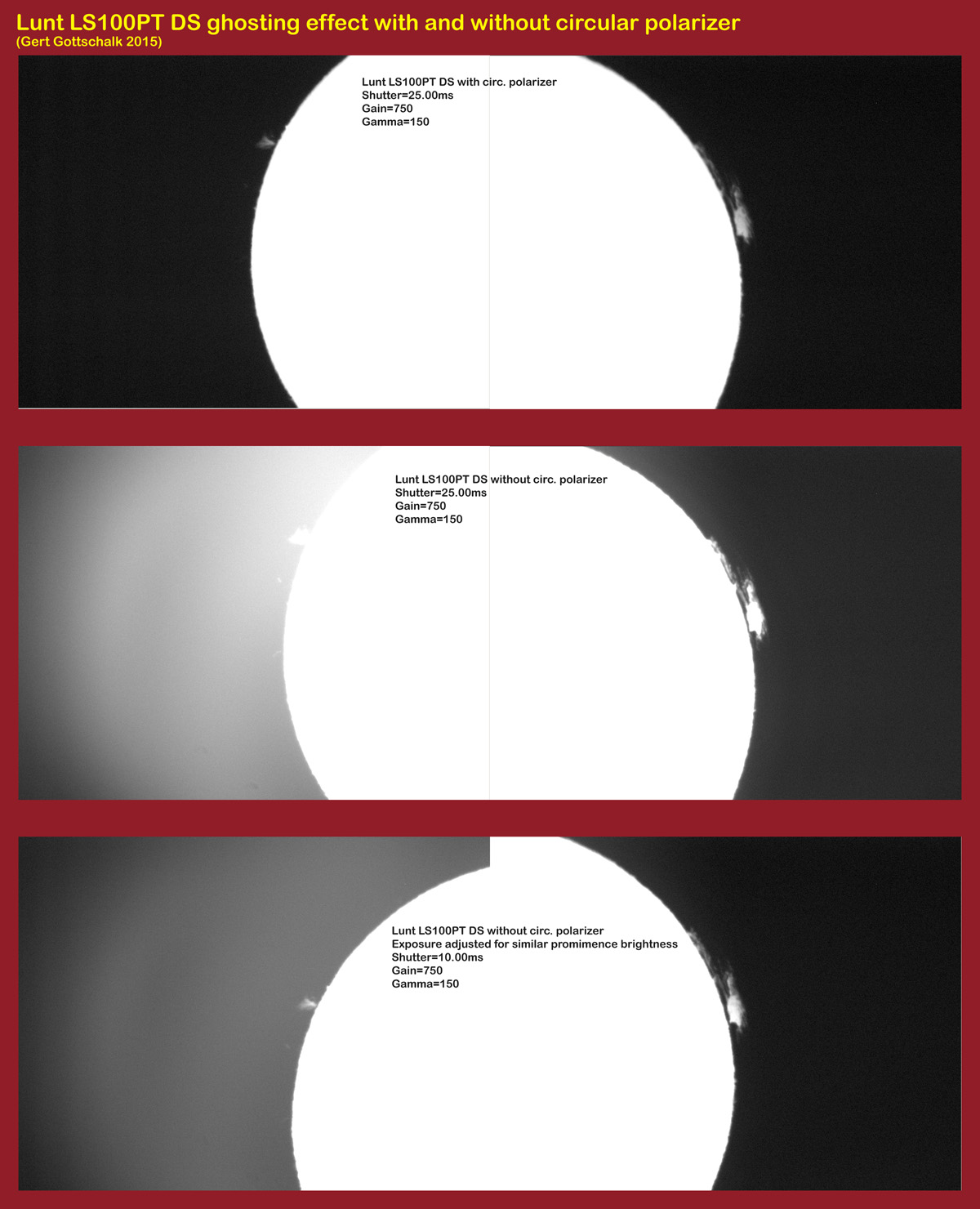
Below photos show the building of a threaded holder for the polarizer filter.
Copyright images and processing Gert Gottschalk.
Copyright Bilder und Verarbeitung Gert Gottschalk